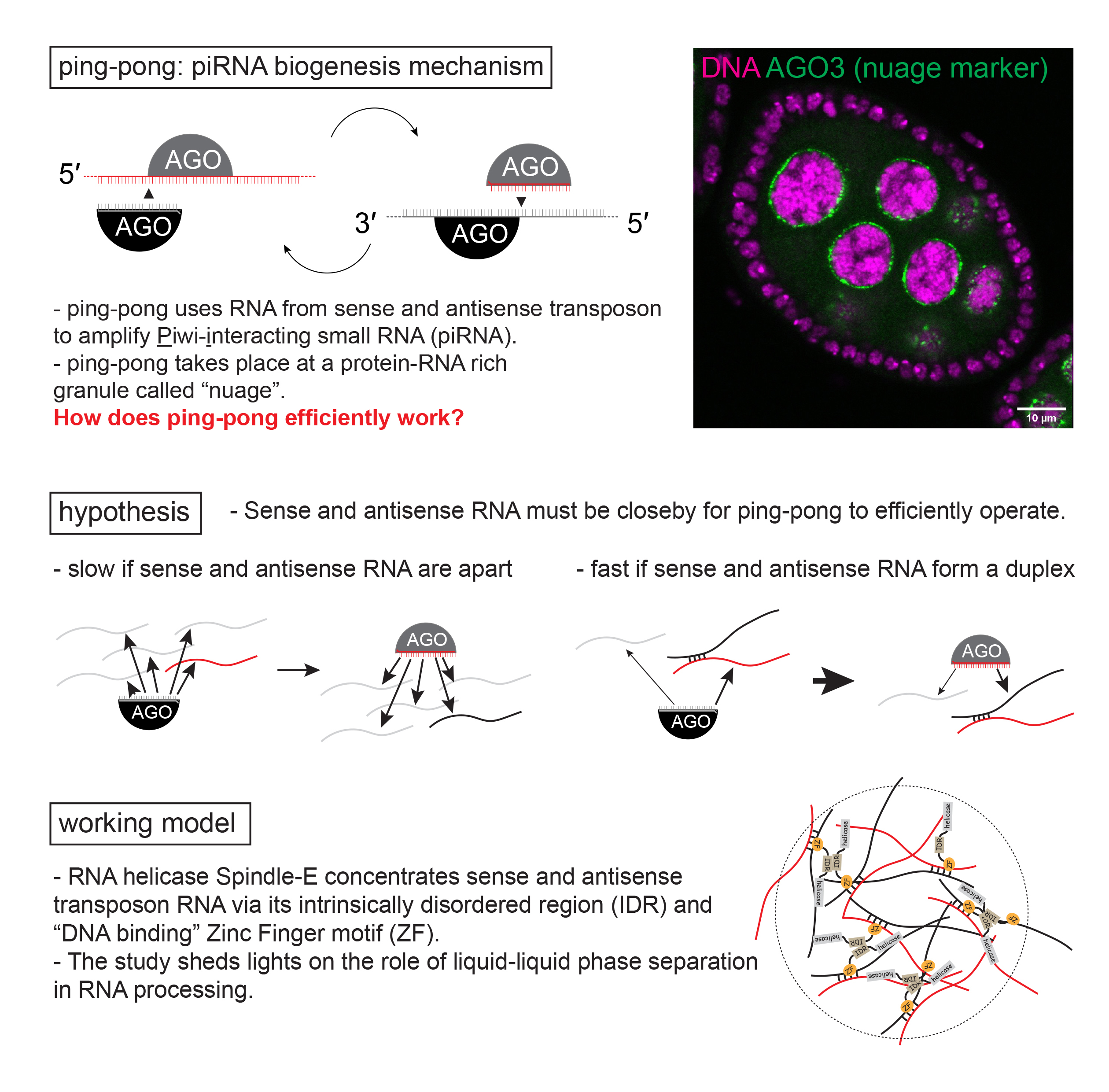Potential role of phase separation in transposon defence
Investigating the role of Spindle-E Zinc Finger motif in piRNA ping-pong biogenesis
Project status
Content navigation
About

Transposons are relics of past viral infection and constitute 10 to 80% of the eukaryotic genome. Uncontrolled expression of transposons causes DNA damage and sterility, and is associated to cancer progression and inflammatory diseases. We study the small RNA pathway called Piwi-interacting RNA (piRNA) pathway, an evolutionarily conserved defence mechanism against transposons. In the model organism fruit fly Drosophila melanogaster, piRNAs are made from RNA coming from sense and anti-sense strands of transposon via a mechanism called ping-pong.
In an unpublished study, we found that the Zinc Finger motif in the RNA helicase protein Spindle-E is required for efficient piRNA production. Intriguingly, the Spindle-E Zinc Finger resembles those of DNA binding proteins. We hypothesise that the Zinc Finger binds double-stranded RNA from both strands of transposon RNA instead of double-stranded DNA. Furthermore, Spindle-E has an intrinsically disordered region next to the Zinc Finger, which is generally known to contribute to the liquid-liquid phase separation of molecular condensates. In this project, we propose to further investigate the function of Spindle-E Zinc Finger motif in piRNA production and its potential role in phase separation.
The project involves fruit fly genetics, confocal microscopy imaging and next generation sequencing of small RNA.

